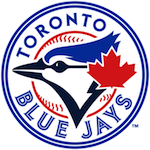Thursday's rains in Florida meant another spring day without baseball. I wonder if teams will gradually relocate to Arizona, because of the more reliable March weather there. Rainouts and rain delays are perfect times to look at the broader picture, so here goes.
With the departure of Carlos Delgado, a legitimate question has been asked: how will the Jays score runs this year? There does not seem to be an abundance of either power or speed, and some have suggested that an increased use of the hit and run, the sacrifice, and other one-run strategies might be in order. Let's have a closer look.
THE CONTEXT
In 2003, the Jays hit .279/.345/.455 with 190 homers. They stole 37 bases, and were caught 25 times. The end result was 897 runs scored. In 2004, with more or less the same personnel, the team hit .260/.328/.403 with 145 homers. They stole 58 bases and were caught 31 times. The end result was 719 runs scored. A halfway point between the 2 seasons would be .269/.336/.429 with 167 homers and 808 runs scored. Those figures seem to me to be eminently achievable targets for 2005, regardless how often one-run strategies are used.
As a check, I looked at ZIPS projections and pro-rated some of the figures, so that the plate appearances total a typical season, bearing in mind some assumptions aboout player usage this year. The pro-rating reduces the home run figures, but does not affect the rate stats. Here are the figures (PR=pro-rated):
Player PAs BA OBP SLUG HR Rios 634 .295 .343 .411 7 Wells 681 .296 .348 .511 30 Hinske 628 .253 .338 .420 18 Zaun 316 .254 .348 .379 5 Quiroz 368 .242 .315 .436 14 Hudson 584 .274 .344 .425 12 Cat 390 .292 .352 .441 7 Gross 450PR .261 .364 .402 9 Hillenbrand 450PR .291 .332 .441 12 Koskie 529 .270 .374 .476 20 Sparky 250PR .278 .332 .392 5 Menenchino 175PR .241 .340 .366 4 Adams 601 .268 .332 .375 8 McDonald 100PR .240 .277 .315 0
The ZIPS projection would have the Jays with a little higher OBP than my target, a little lower slugging percentage and 151 homers. Still I have little doubt that if the Jays meet these projections, they'll score 800 runs or a little below league average.
That is not to say that one-run strategies do not have a place. In Hiram Bithorn last year, it was well nigh impossible to hit a home run, and the teams playing there were transported back into the dead ball era. Alas, the Jays were not able to execute sacrifices, the hit and run play or the other staples of the dead ball era, and were consequently at a significant disadvantage. This season, there will be game situations where one-run strategies should be seriously considered by Manager John Gibbons.
What one-run strategies can accomplish, if used judiciously, is to ensure that the runs scored over a season are distributed more evenly over a team's games.
THE PERSONNEL
Knowing who does what well is a key factor in managerial decision-making. Here is 3-year data on the Jay starters and Gabe Gross:
Player SBs SB success K rate Rios 42 .74 .16 Adams 42 .84 .12 Wells 22 .76 .13 Cat 12 .63 .13 Hinske 37 .77 .22 Sparky 15 .56 .16 O-Dog 20 .61 .17 H'brand 7 .78 .12 Koskie 30 .61 .25 Zaun 4 .5 .17 Gross 18 .6 .21
Hinske's stolen base percentage was off last year, and it is unlikely that he will continue to steal at a 77% success rate.
THE STOLEN BASE
Stolen bases are only of value if they succeed at approximately a 75% rate. So, Rios, Adams and Wells can potentially help steal bases usefully. Red lights for everyone else.
THE HIT AND RUN
Starting baserunners is another story entirely. You wouldn't want to hit and run often with Zaun on the bases, or with Koskie, Hinske or Gross at the plate, but in just about every other situation, it is a viable option.
THE SACRIFICE
Who bunts well on the club? Reed Johnson, and perhaps, Adams. It will be used rarely.
So, perhaps there will be increased use of one-run strategies. One can't forget that it is a truly marginal thing. There is no substitute for getting runners on base in numbers. Last year, Tampa Bay, who the Jays play tonight at 7:05, hit for a similar average to the Jays, a wee bit more power, and stole 74 more bases with much greater efficiency. But, the Rays drew 44 fewer walks and scored 5 fewer runs. Minnyball and Moneyball and Bostonball and Yankeeball all meant more runners on base and more pop last year than the Jays had. That is what produces runs.
LINKS OF THE DAY
John Sickels looks back at the top 50 prospects of 1997
McGwire testifies at House Committee steroids hearing




